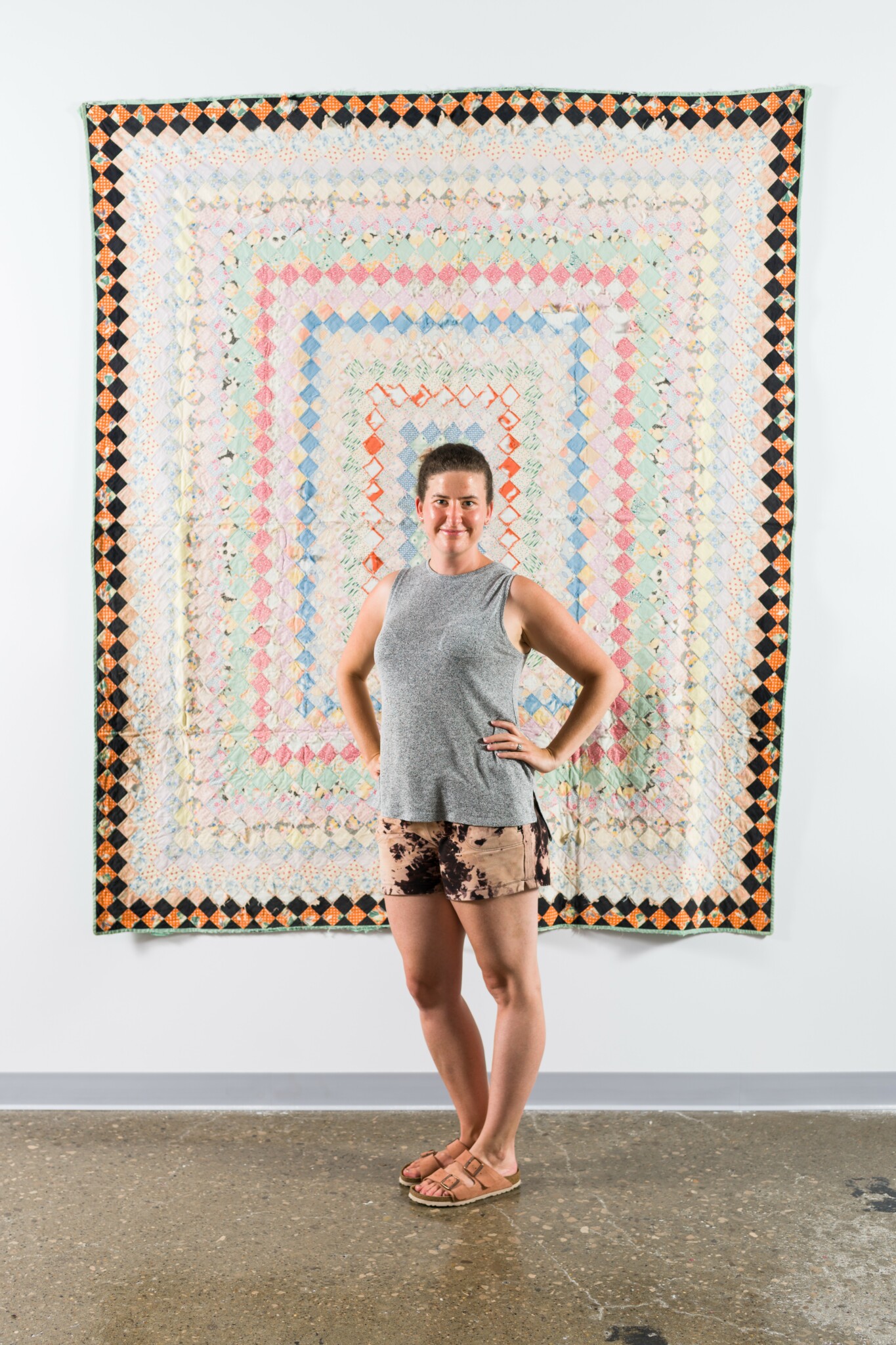Alright – so today we’ve got the honor of introducing you to Catherine Reinhart. We think you’ll enjoy our conversation, we’ve shared it below.
Hi Catherine, thanks for joining us today. We’d love to hear about a project that you’ve worked on that’s meant a lot to you.
I always have trouble identifying “the most” of anything.
Because I work cyclically, I am always visiting and re-visiting previous themes, materials or projects.
One work does stand out in my mind.
During the pandemic, I created The Mother Rubbings, a durational performance in which I walked rows of graves, taking rubbings of every headstone marked ‘mother.’ It resulted in photographs, audio recordings, and a scroll. This performance served as a personal and collective means of expressing grief over the deaths of millions of women and mothers due to COVID-19.
A 150-foot-long scroll of Mothers. A marking of the deep time of grief.
The Mother Rubbings suggests a role for art and artists within the mourning experience. The piece asks: How can art objects facilitate the communal grieving process?
Recently, I have been revisiting this work in light of my mother’s breast cancer diagnosis.
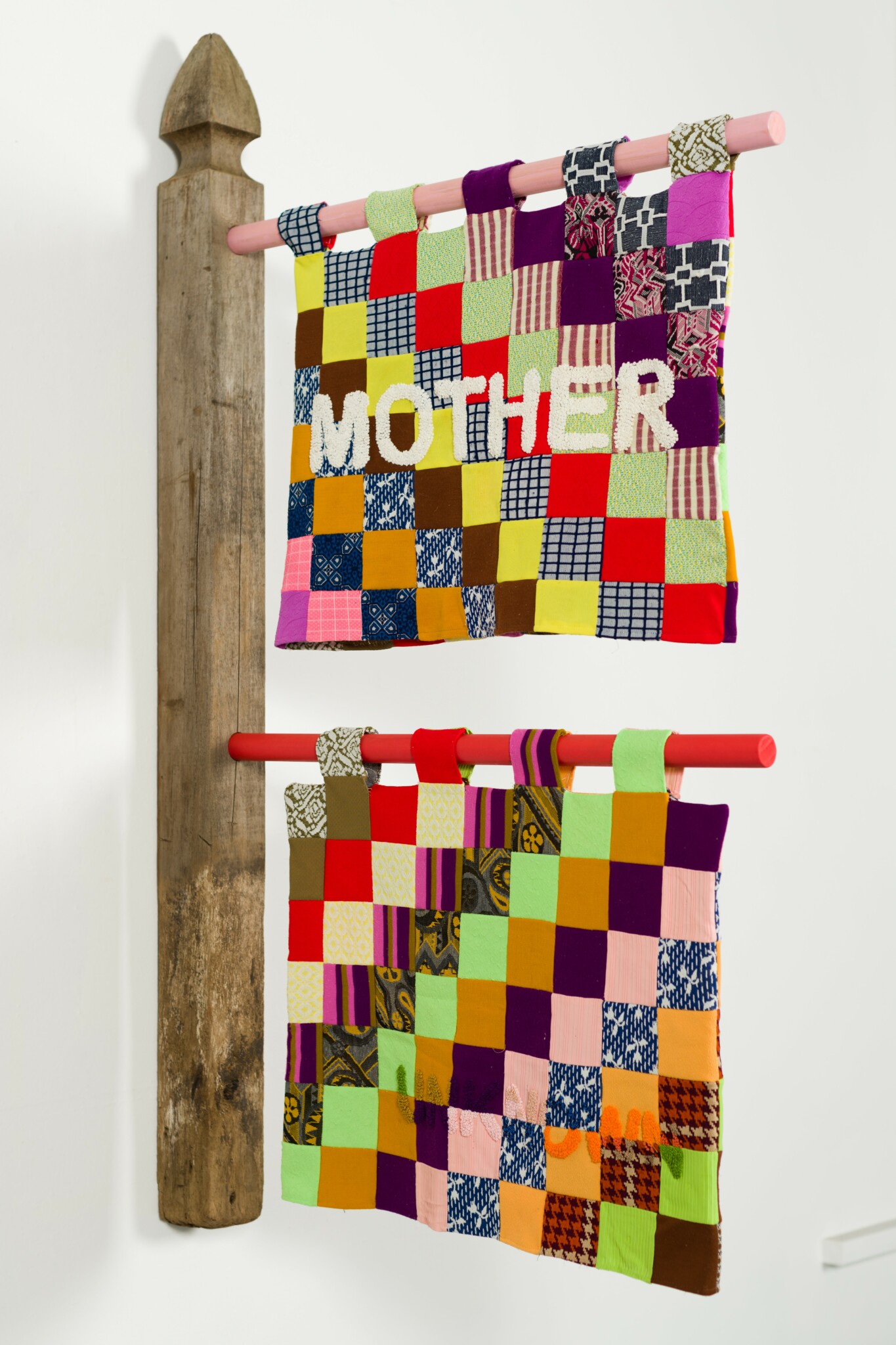
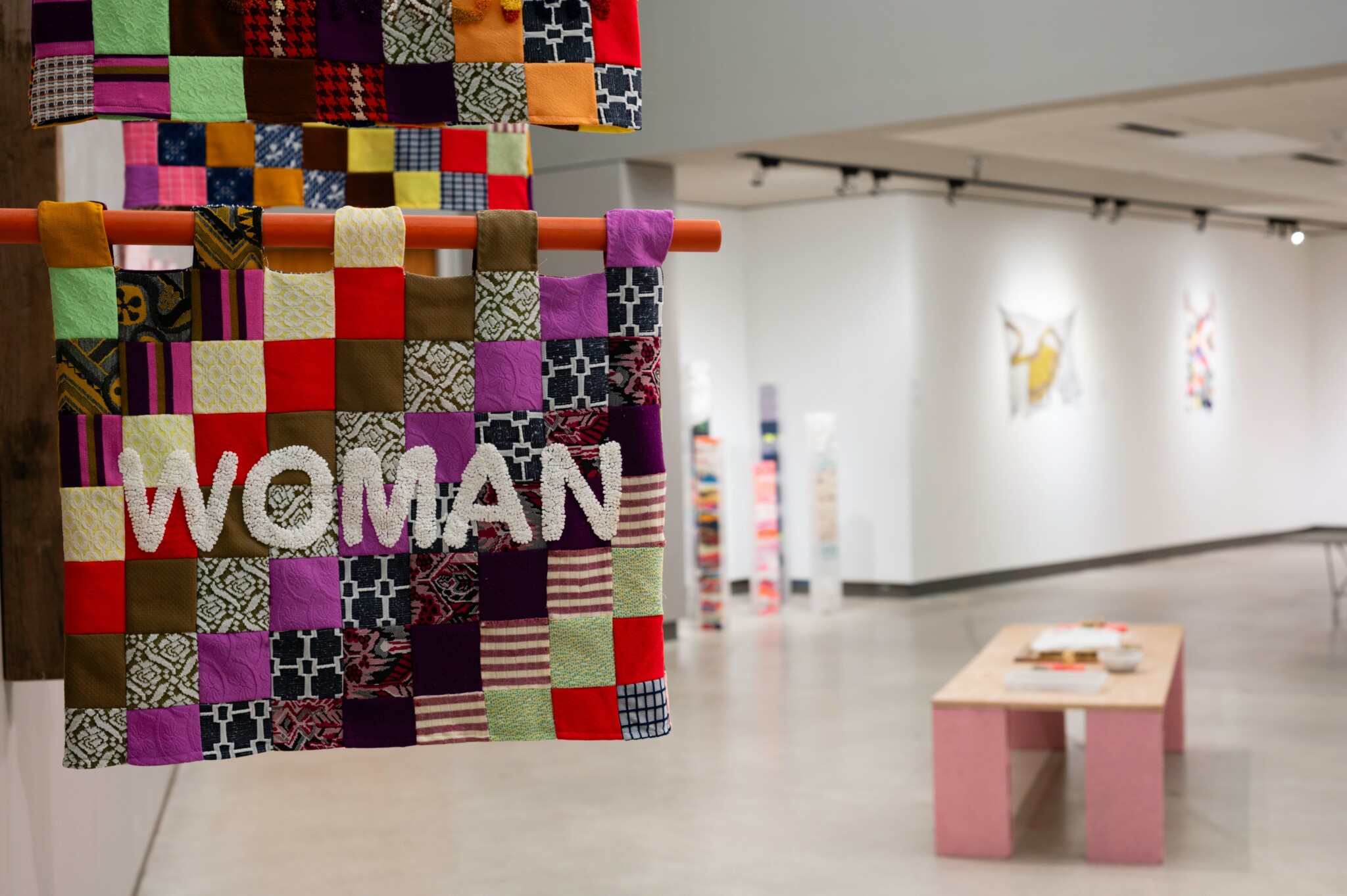
Awesome – so before we get into the rest of our questions, can you briefly introduce yourself to our readers.
I am an interdisciplinary artist who makes contemporary fiber artworks and sculptures and conducts socially engaged projects with abandoned textiles. These works center on themes of labor, connection, and care. My primary goal is to increase the visibility of women in contemporary art, emphasizing artist-mothers. I live and create in Ames, Iowa with my husband and two children.
Materiality and conceptual interests equally influence what I choose to make. I let questions and curiosity drive my cyclical studio practice.
My current questions are:
What is lost & what is held?
How do we track the rituals of Motherhood?
What incremental grief & tender gestures remain invisible?
From year to year, my work looks very aesthetically different. At solo shows of my work, I have been asked, “Who are the artists in this group show?”. I pride myself on this fact, but it was a source of insecurity when my career began. My work spans media, themes, and textile techniques, ranging from subtle drawings to interactive installations to small, weird sculptures using hair. Almost always, they are colorful. Almost always, they use abandoned materials sourced from estate sales, left on the side of the road, or donated from my community. I randomly receive old quilts in the mail. I am interested in the redemption and transformation of these materials.
Things that we burn, wear out, throw away, eat, kill, silence, forget; things that we repair, recycle, make, plant, give birth to, remember; things that decompose, evaporate, crumble into dust; things that germinate, multiply, grow mutate, speak. Think about art in terms of time…” -Rebecca Solnit, Landscapes of Emergency.
As artist and mother, I am both archivist and field hand, creating studies in the accretion of domestic life and cataloging its labors. I disassemble, reconfigure, and alter abandoned textiles. Undoing is just as important to make work as doing is.
Elaborate hand-embroidered text is camouflaged into existing textile patterns, echoing the hidden labors of motherhood. Stratums of fiber in my sculptures reference sedimentary layers and the state of my laundry pile. I map the territory of my home place with the visual language of topographic maps.
I mostly make contemporary artworks for display in museums or galleries. The other arm of my practice is The Collective Mending Sessions, a series of socially engaged workshops centered around collaboratively mending abandoned quilts. This project uses craft as a catalyst for social repair, asking the question, “How do we MEND our communities?”. Since 2019, I have facilitated over 50 workshops with 500+ participants worldwide, mending eight quilts and cultivating care for cloth and community.
Learn more about The Collective Mending Sessions: https://www.collectivemendingsessions.com/
Support The Collective Mending Sessions with a tax-deductible donation: https://fundraising.fracturedatlas.org/the-collective-mending-sessions
I have always been navigating the challenges of being the primary caregiver and a professional studio artist. Mostly, I fund my studio projects through writing and receiving grants, residencies and community support. My small but loyal Patreon (join me?) provides a reliable monthly income. My website is home to a shop where I sell some of the weird and wonderful things I make.
While I deeply believe that ARTWORK IS WORK and CAREWORK IS WORK, I don’t make things with selling in mind. And I hate marketing my work. I always have one foot in capitalism and one foot in alternative communities of exchange, barter, and communal creation. I am so fortunate that my artwork is slowly making its way into the homes of fantastic collectors who appreciate my intuitive, eclectic, and varied works.
I invite you to learn more about my work. If you can, please support me financially by donating or adding my art to your collection.
With my artwork, I contribute to relevant and timely discussions reframing the value of care and connection to our neighbors and our possessions. Navigating the changing landscape of the home-place, with all its triumphs, failures, and interruptions, I give voice and hold space for stories of repair, loss, and kinship.
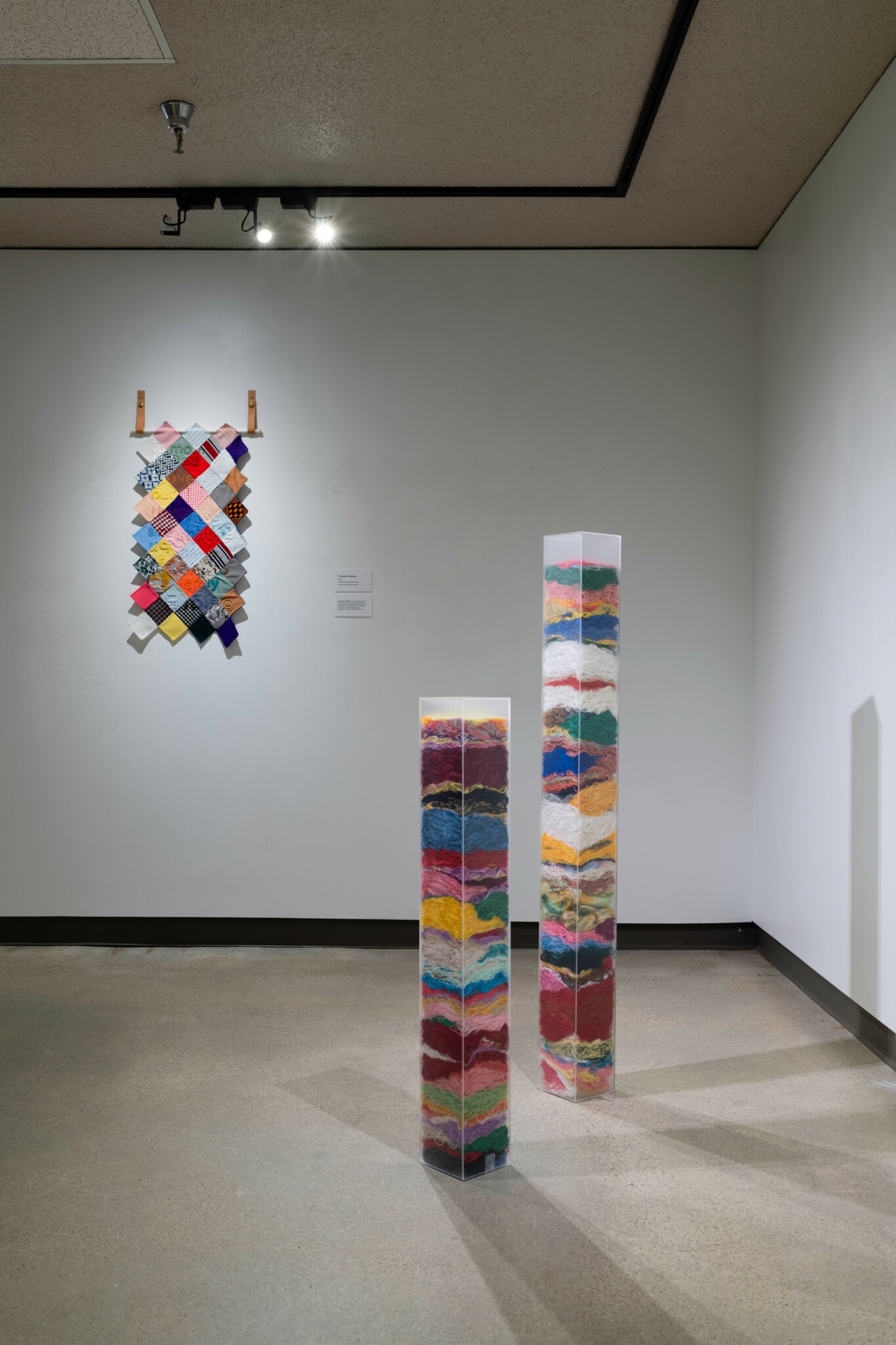
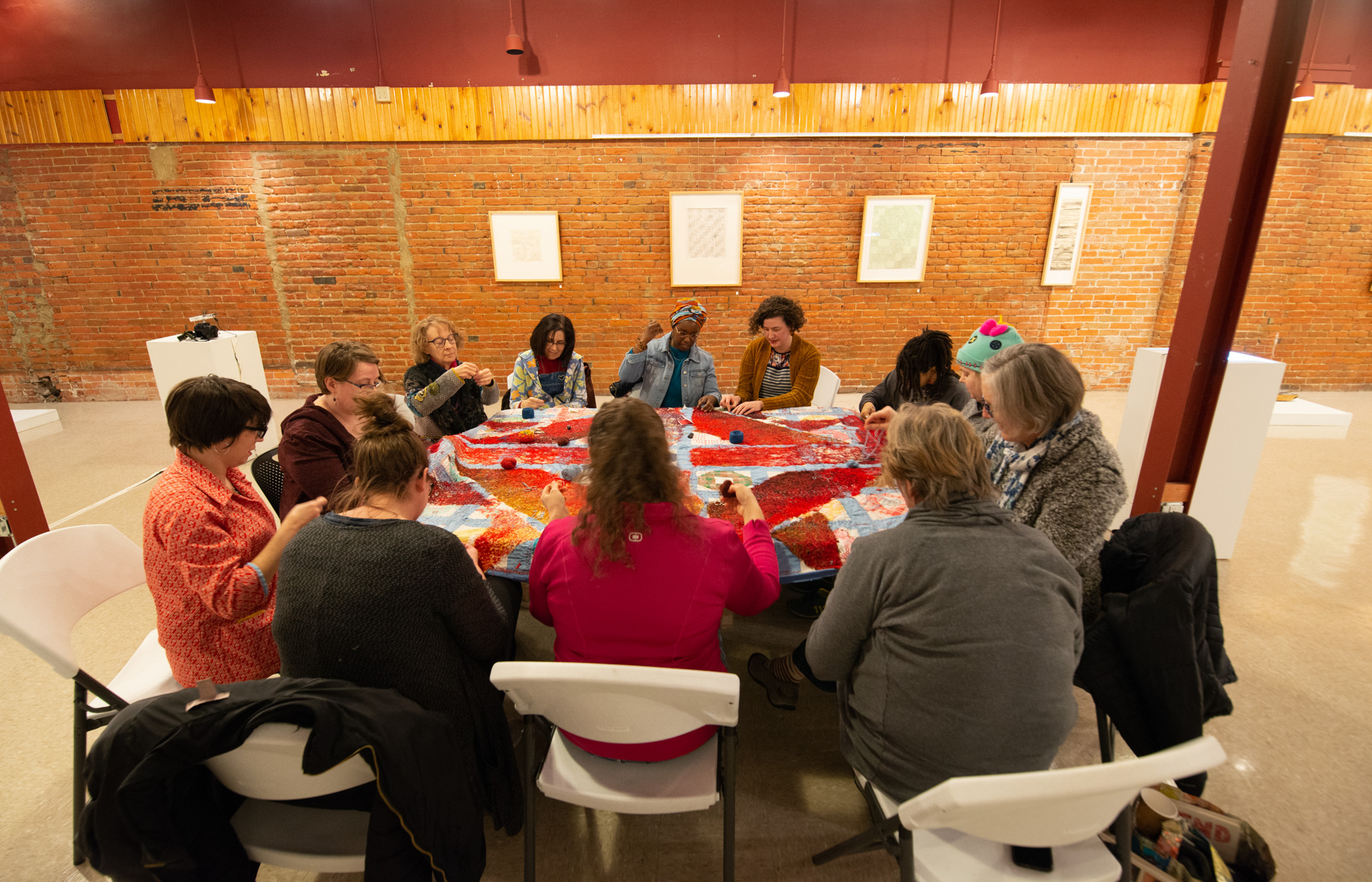
Have you ever had to pivot?
Early in my joint motherhood and art career, I felt as though I was always pivoting. I got so good at it. Have a solo show coming up? Rent a studio downtown and bring the baby to make work. Run out of money? Studio becomes one table in the basement. Husband wants to go back to grad school? Start sourcing materials that you can get free or cheap: thrifted textiles, loom waste, or donated heirloom quilts.
These days, with both my kids in school, I can settle into working as a full-time artist. Although I never saw myself as anything but a full-time artist. I was always walking around with ideas crammed into my mind. But these days, I feel exhausted by the constant pivoting. Yearning for a studio, I can keep for decades and a generous community that drops off textiles on my doorstep.
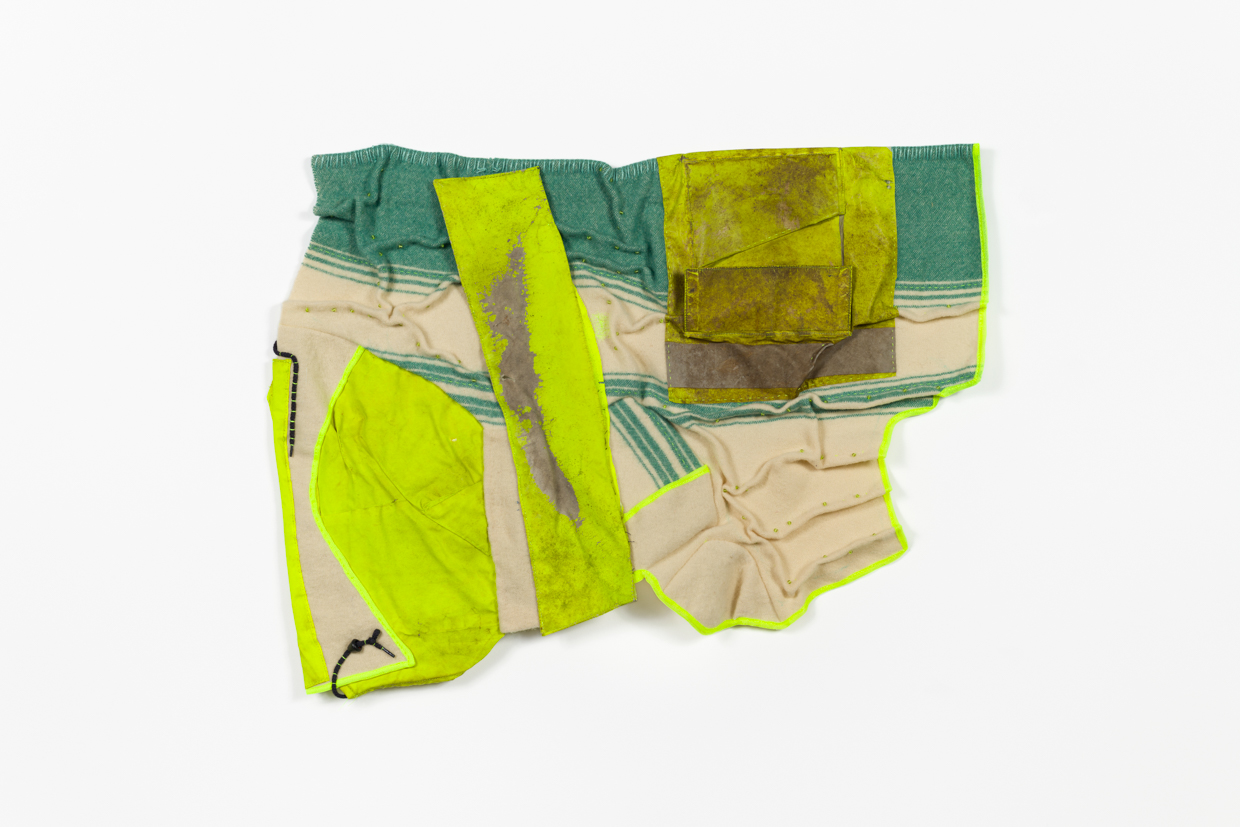

Is there a particular goal or mission driving your creative journey?
My primary goal is to increase the visibility of women in contemporary art, emphasizing artist-mothers. This starts with my own work but extends out into my community. Early in my art career, I found two other artist-mother-entrepreneurs who supported me. We were all pregnant simultaneously and navigating how to keep creating. We swapped childcare for studio time and talked art. That community was so vital to my life as an artist. I am deeply grateful to these amazing women who have become small business owners and thoughtful advocates in our community in Ames, IA. Recently, another friend and I founded the Iowa Artist/Mother group. This group supports artists/mothers in our state through comradery, gatherings, and exhibitions. In short, community drives my creative journey.
Contact Info:
- Website: https://www.catherinereinhart.com/
- Instagram: https://www.instagram.com/catherine_reinhart_studio/
- Facebook: https://www.facebook.com/c.r.studioCatherineReinhart
- Other: The Collective Mending Sessions Website: https://www.collectivemendingsessions.com/
The Collective Mending Sessions Instagram: https://www.instagram.com/collectivemendingsessions/
Fiscal Sponsor – The Collective Mending Sessions: https://fundraising.fracturedatlas.org/the-collective-mending-sessionsPatreon Site: https://patreon.com/catherinereinhart?utm_medium=clipboard_copy&utm_source=copyLink&utm_campaign=creatorshare_creator&utm_content=join_link
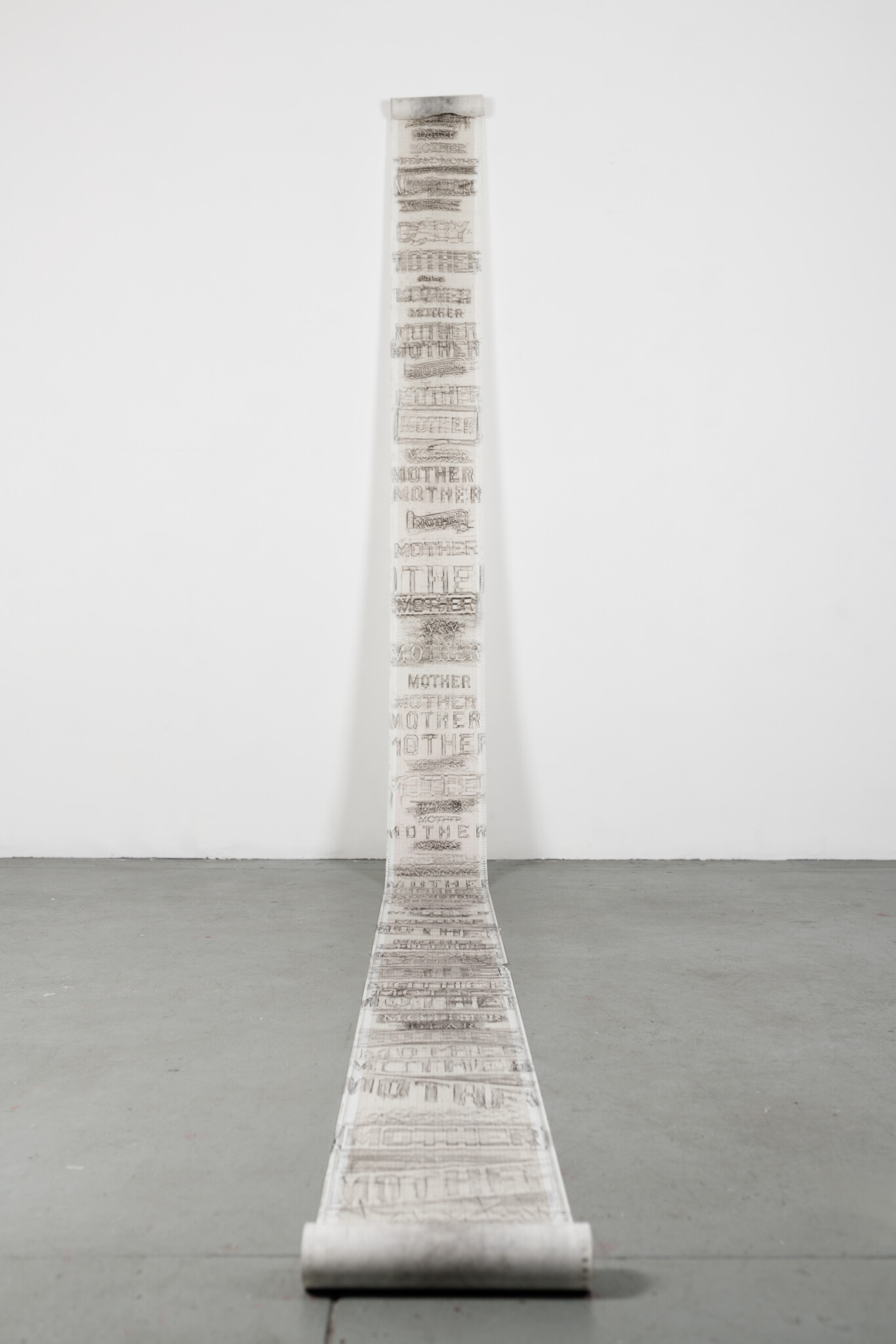

Image Credits
Brittany Brooke Crow


